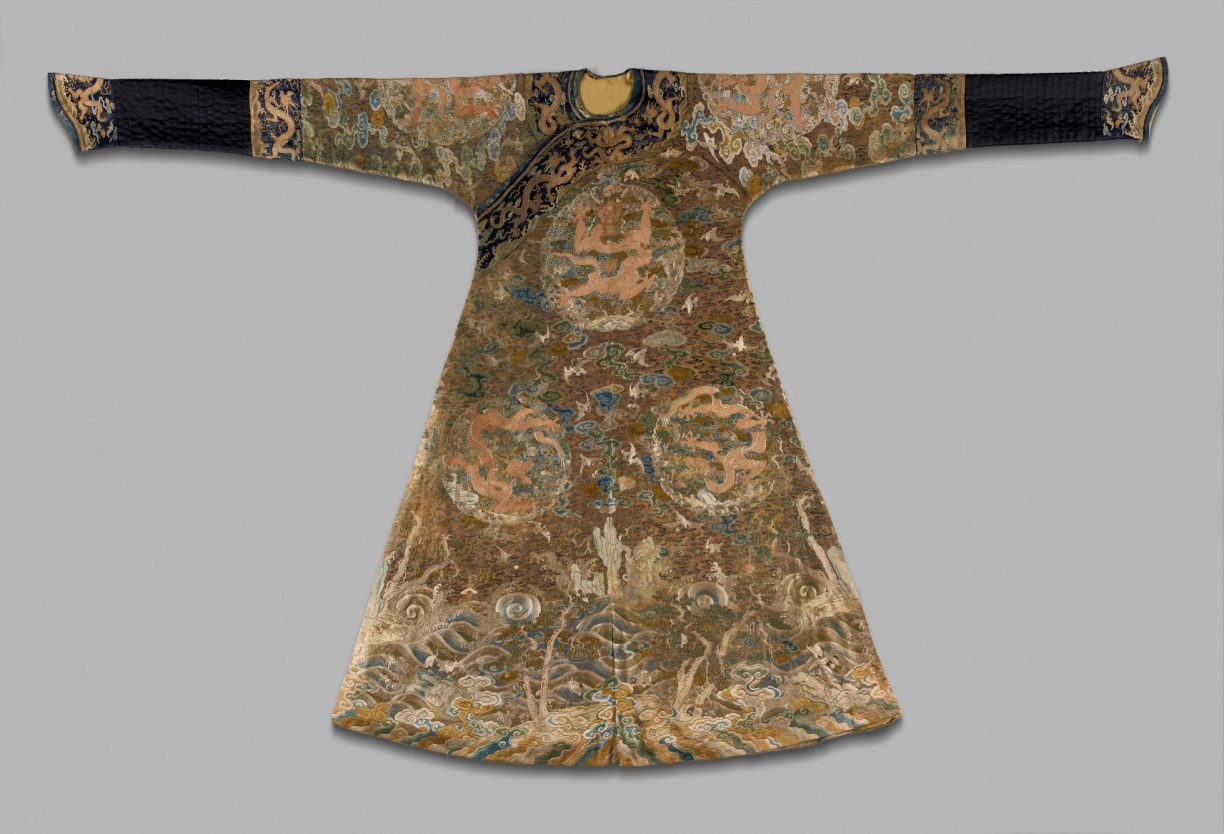
One Hundred Cranes Imperial Robe, Chinese, Late 17th-early 18th century Qing Dynasty (1644–1911). Embroidered damask, 57 7/8 x 91 inches. Courtesy of Nelson-Atkins Museum of Art
For the first time in decades, The Nelson-Atkins Museum of Art in Kansas City will display precious, rarely seen Chinese, Indian, Japanese, Persian, and Turkish costumes and textiles. Weaving Splendor: Treasures of Asian Textiles opens Sept. 25 and runs through March 6, 2022. Made with fine materials, exemplary techniques, and artistry, Asian luxury textiles were treasured locally and were central to global trade. The sumptuous textiles in this exhibition conveyed the identities, status, and taste of both local and international patrons and consumers.
Weaving Splendor is curated by Ling-en Lu, Curator of Chinese Art, Kimberly Masteller, Jean McCray Beals Curator of South and Southeast Asian Art, Yayoi Shinoda, Assistant Curator of Japanese Art, and Michele Valentine, Department Assistant, South and Southeast Asian Art. Costumes of the court communicated power, while theater robes brought stage characters to life. Ornate wall hangings and furniture covers transformed palaces, temples, and homes, while shimmering, tapestry-woven carpets were created as diplomatic gifts for foreign rulers. The stories of these treasures of the collection take visitors on a remarkable journey across continents from the 1500s to today.
“For centuries, Chinese textile artists produced the most refined silk textiles utilizing luxury materials and techniques to make the garments not only functional but also appreciated as artwork,” said Lu. “One example is the picturesque embroidery of the One Hundred Cranes Robe, which came from the Qing dynasty imperial tomb of Prince Guo (1697–1738). This rare garment is widely considered to be one of the most important Chinese textiles in the United States.”
Between the late 1800s and early 1900s, Japanese artists made many high-quality textiles for American and European customers. These textiles were sold at international expositions, department stores, and art galleries in Europe, Japan, and the United States. They were also presented as diplomatic gifts from the imperial house and government to political allies. Japanese textile makers faced many challenges in the late 19th century, but nimbly adopted to the new economic and social changes. They did not reset their knowledge and skills, but built upon what they learned from predecessors in previous centuries by studying and adopting new clients’ taste and needs and new weaving technology brought from Europe.
The exhibition will also spotlight local fascination with Asian textiles. In the late 1800s, affluent Americans like Kansas City’s Jacob and Ella Loose boarded steamships and set sail for Asia. There they explored firsthand cultures and lands largely understood in the United States through published accounts, and as most tourists do, they shopped. Luxurious tapestries and wall hangings, like those produced in Japan and later donated by the Looses, were easy to pack for safe travel home. European and American collectors like the Looses purchased these large and impressive textiles to decorate their mansions.
For more information, click here.
